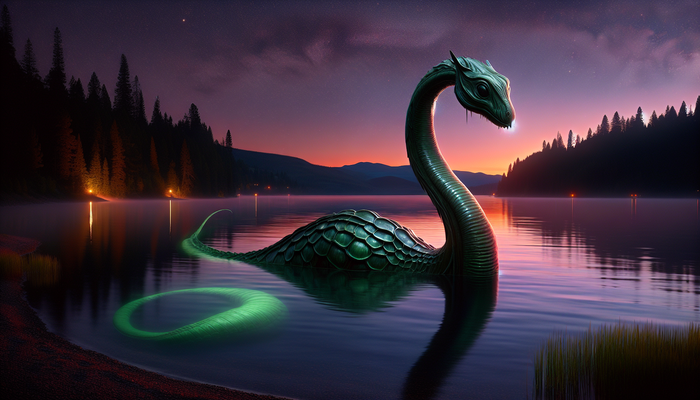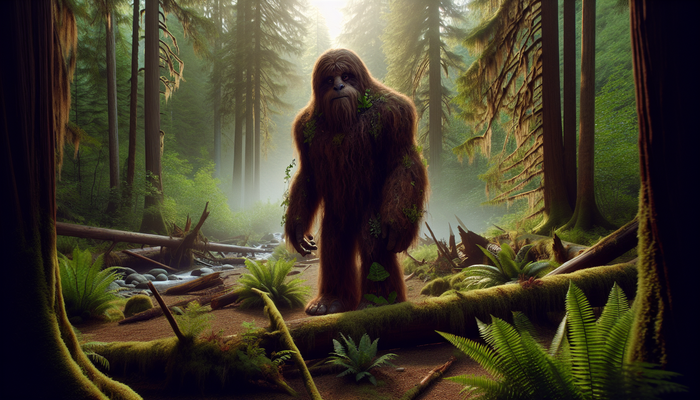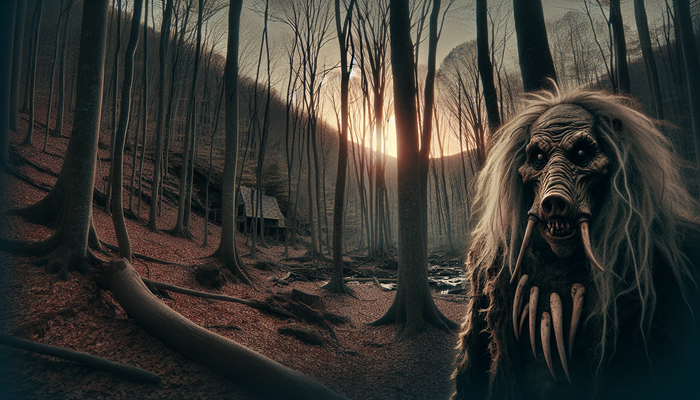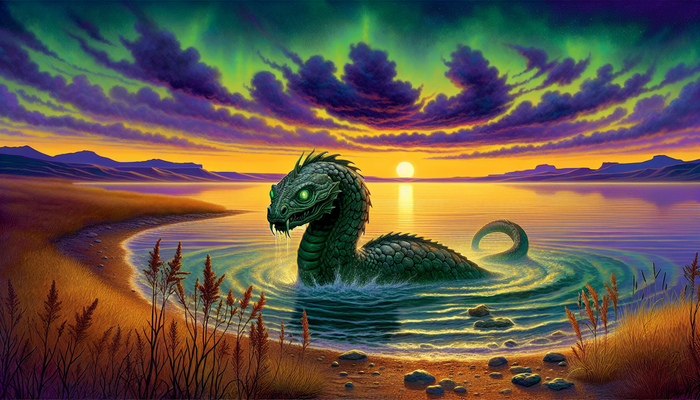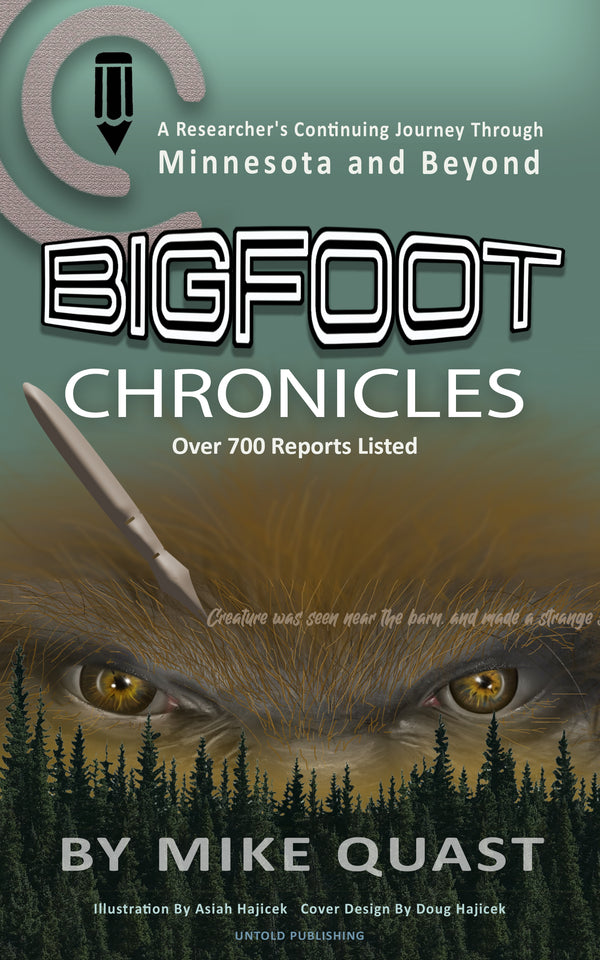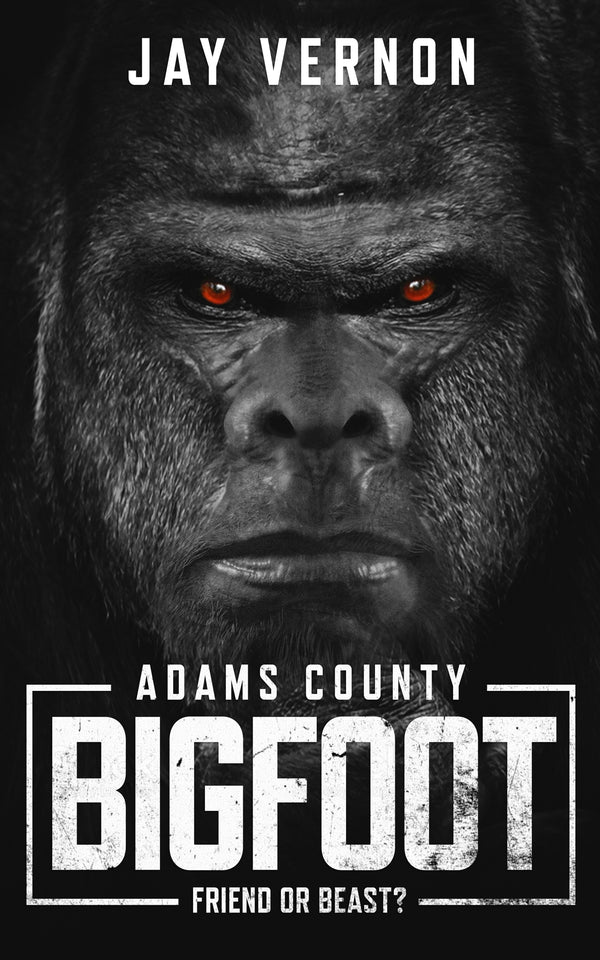Wyoming's Bigfoot Sightings
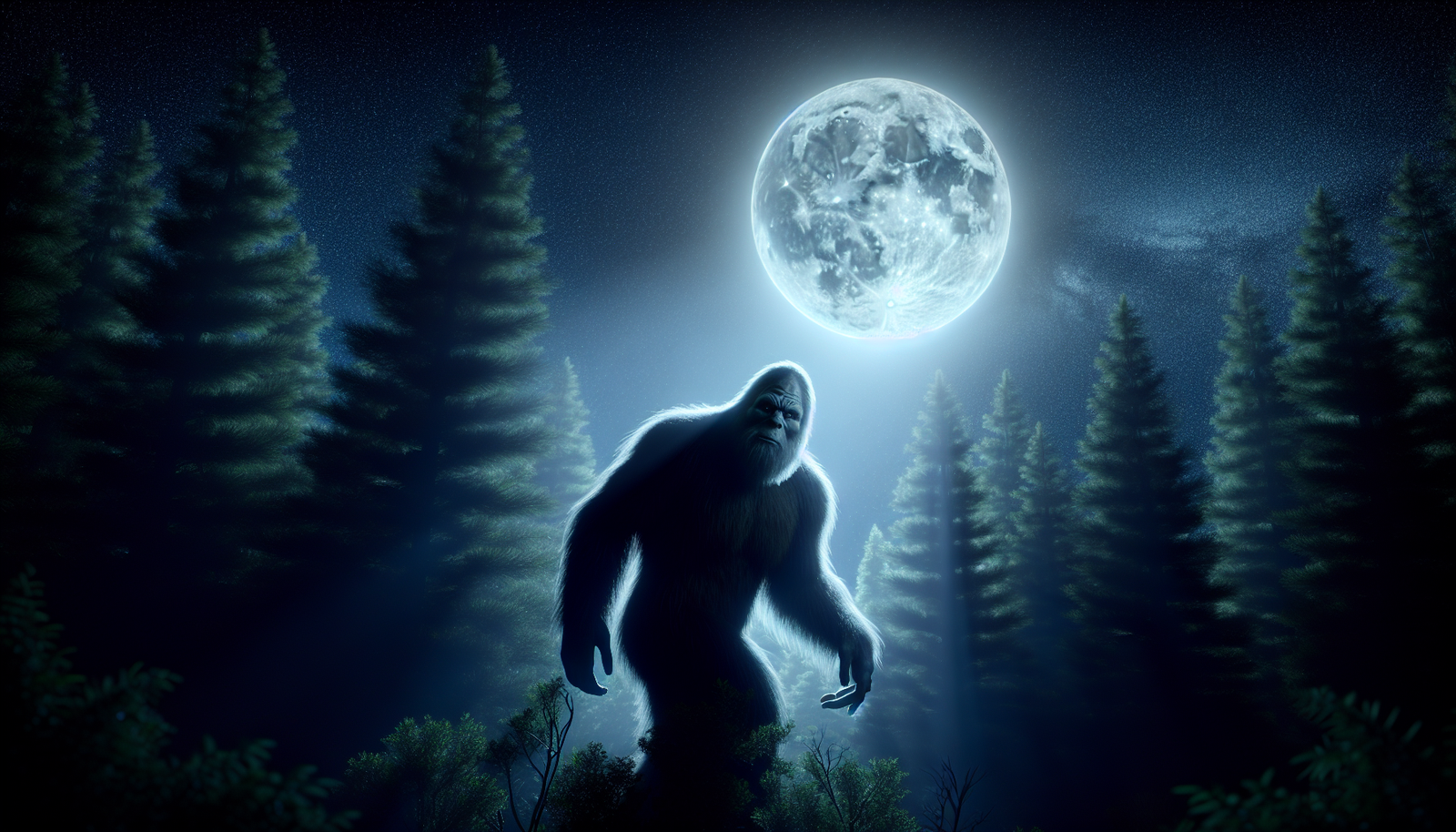
By Lucas Jennings, Cryptozoologist
There's something undeniably captivating about the idea of Bigfoot, the elusive, humanoid creature said to roam the forests of North America. As a cryptozoologist, I've always been drawn to the mysteries that lie just beyond the boundaries of conventional science, and Bigfoot is perhaps the most iconic of these enigmas. But while the Pacific Northwest may be the region most commonly associated with Sasquatch sightings, my research has led me to an unlikely hotspot for Bigfoot activity: the rugged, remote wilderness of Wyoming.
In this article, I'll be delving into the surprising history of Bigfoot encounters in the Cowboy State, examining the credibility of the witnesses, and exploring the cultural impact of these sightings. Join me as we embark on a journey to uncover the truth behind Wyoming's Bigfoot mysteries.
Wyoming: An Unlikely Bigfoot Habitat?
At first glance, Wyoming might not seem like the most obvious place to search for Bigfoot. After all, the state is known more for its wide-open spaces, towering mountain ranges, and sparse population than for its dense forests and hidden creatures. But it's precisely these characteristics that make Wyoming an ideal habitat for a creature like Sasquatch.
Wyoming boasts vast tracts of undeveloped land, including millions of acres of national forests and wilderness areas. The Shoshone National Forest alone covers nearly 2.5 million acres, offering ample space for a large, elusive creature to roam undetected. The state's low population density, especially in its more remote regions, also means that any Bigfoot sightings are less likely to be dismissed or overlooked.
Surprisingly, Wyoming ranks third among U.S. states for reported Bigfoot sightings, with 28 documented encounters according to the Bigfoot Field Researchers Organization (BFRO). Park County, home to the iconic Yellowstone National Park, has been the epicenter of Bigfoot activity in the state, with 9 reported sightings. Other counties with notable Sasquatch encounters include Lincoln, Teton, Carbon, and Uinta.
The 1972 Wind River Mountains Encounter: A Turning Point
One of the most compelling and well-documented Bigfoot encounters in Wyoming occurred in the summer of 1972, in the remote Wind River Mountains. The witness, John Mionczynski, was a wildlife biologist working for the U.S. Forest Service and Wyoming Game and Fish Department, conducting a study that required him to live in the wilderness for an extended period.
Mionczynski's background and expertise lend significant credibility to his account. As a trained biologist with experience studying large mammals like grizzly bears, he was well-equipped to identify and describe any unusual creatures he might encounter.
Late one night, while in his tent, Mionczynski felt a large, heavy presence pressing against the outside of his shelter. Assuming it was a bear, he struck the creature through the tent wall with the back of his hand, causing it to retreat briefly. However, the creature returned, this time standing upright and casting a shadow that indicated it was taller than the tent itself.
In a chilling moment, Mionczynski clearly saw the silhouette of a large, human-like hand with an opposable thumb pressed against the tent. The creature's hand was estimated to be twice the size of Mionczynski's own. After collapsing the tent on top of the startled biologist, the creature retreated, but Mionczynski could still hear its slow, deep breathing and the sound of it throwing pine cones at him for nearly an hour.
Shaken by the experience, Mionczynski reported the incident to his superiors and learned that there had been a rash of similar sightings in the area that summer. Determined to investigate further, he interviewed 25 other witnesses and even collected hair samples from a cabin where a young man claimed to have shot at the creature.
The hair samples were analyzed by renowned forensic anthropologist Walter Birkby, who concluded that they belonged to a primate species not native to Wyoming. This groundbreaking evidence of Bigfoot seemed to support the existence of Bigfoot in the region, but Mionczynski's superiors were less than enthusiastic. In fact, they warned him against associating with the "Bigfoot" label, threatening termination if he continued his research.
Despite the resistance from the scientific community, the 1972 Wind River Mountains encounter remains one of the most compelling and well-documented Bigfoot sightings in Wyoming's history, and a turning point in the state's Sasquatch lore.
Other Notable Wyoming Bigfoot Sightings
While the 1972 Wind River Mountains encounter may be the most famous Bigfoot sighting in Wyoming, it's far from the only one. Over the years, there have been numerous reports of Sasquatch activity throughout the state, many from credible witnesses like experienced outdoorsmen, hunters, and even park rangers.
One such sighting occurred in Yellowstone National Park in 2002, when a family of four spotted a tall, hairy, humanoid figure walking along a ridge about 300 yards away. The creature, estimated to be between 8 and 10 feet tall, was observed in broad daylight, and the family was adamant that it could not have been a bear or any other known animal.
Another notable encounter took place in the late 1990s, in the forested area between Cody and Yellowstone. Two brothers, who were out cutting timber, witnessed a large, bipedal creature covered in dark hair, walking across a slope near the river where they were working. The creature was estimated to be up to 10 feet tall and had a mass that was inconsistent with that of a bear.
In 2008, a couple and their geologist friend had a frightening encounter while driving from Cody to Yellowstone late at night. As they rounded a curve in the road, they were startled by a tall, hairy figure moving at a rapid pace, estimated to be around 45 miles per hour. The creature's movements and size were clearly not consistent with any known animal in the region, and the witnesses were left shaken by the experience.
These sightings, along with many others reported throughout Wyoming, share several common threads. Witnesses consistently describe a tall, bipedal creature covered in dark hair, with a size and mass that is distinct from that of a bear or any other known animal. The sightings often occur in remote, heavily forested areas, and the creatures are typically observed moving with surprising speed and agility for their size.
Physical Evidence and Native American Folklore
In addition to eyewitness accounts, there have been several instances of physical evidence supporting the presence of Bigfoot in Wyoming. In the late 1990s, a series of large, human-like footprints were discovered in the snow near the town of Atlantic. The prints, which measured up to 18 inches in length, were analyzed by experts and found to be consistent with the characteristics of Bigfoot tracks, rather than those of any known animal.
Similarly, in 2012, a hunter in the Beaverhead Mountains near Argenta, Montana (just across the border from Wyoming), reported finding a large, fresh footprint measuring around 30 inches in length. The experienced outdoorsman was convinced that the print could only have been made by a Bigfoot-like creature.
While physical evidence like footprints can be compelling, it's important to approach such findings with a degree of skepticism. After all, tracks can be faked, and without additional evidence, it can be difficult to draw definitive conclusions. However, when considered alongside the numerous eyewitness accounts and the historical context of Bigfoot sightings in the region, these discoveries add another layer of intrigue to the mystery.
Speaking of historical context, it's worth noting that the idea of a large, hairy, humanoid creature roaming the wilderness is not a new one in Wyoming. Many Native American tribes in the region, including the Shoshone and Arapaho, have long-standing traditions and stories about such beings.
The Shoshone, for example, have a legend about a creature known as the "Nantinaq," said to inhabit the remote areas of Wyoming, particularly around the Portlock region. This legend, passed down through generations, describes a large, hairy, bipedal creature that bears a striking resemblance to the modern conception of Bigfoot.
These Native American legends and folklore add another layer of depth to the Bigfoot mystery in Wyoming, suggesting that the idea of a Sasquatch-like creature in the region may have roots that extend far beyond the modern era of sightings and investigations.
Wyoming's Bigfoot Culture and Tourism
As Bigfoot sightings have continued to capture the public's imagination, Wyoming has embraced its status as a Sasquatch hotspot, incorporating the legendary creature into its local culture and tourism industry.
The town of Cody, located near the eastern edge of Yellowstone National Park, has become a hub for Bigfoot enthusiasts, hosting an annual "Bigfoot Days" festival. The event, which draws visitors from across the country, features presentations by Bigfoot researchers, guided expeditions into the surrounding wilderness, and a variety of Sasquatch-themed activities and merchandise.
In addition to the festival, several local businesses have capitalized on the Bigfoot craze. The Sasquatch Expedition Campers company, based in Silverton, Colorado, caters to adventurers and Bigfoot enthusiasts who want to explore the rugged backcountry of Wyoming and the surrounding states in search of the elusive creature.
These cultural and commercial developments demonstrate the enduring power of the Bigfoot legend, and its ability to capture the imaginations of people from all walks of life. Whether or not one believes in the existence of Sasquatch, there's no denying that the creature has become an integral part of Wyoming's cultural fabric, adding to the state's rich tapestry of myths, legends, and outdoor adventures.
Skepticism, Debate, and the Ongoing Search for Answers
Despite the compelling eyewitness accounts, intriguing physical evidence, and rich cultural history surrounding Bigfoot in Wyoming, the scientific community remains largely skeptical of the creature's existence. The primary reason for this skepticism is the lack of definitive, empirical evidence that can withstand rigorous scientific scrutiny.
While footprints, hair samples, and eyewitness testimony can be compelling, they are not considered conclusive proof in the eyes of mainstream science. After all, tracks can be faked, hair samples can be contaminated or misidentified, and eyewitness accounts can be influenced by a variety of psychological and environmental factors.
Additionally, some skeptics argue that the sheer number of Bigfoot sightings over the years, combined with the lack of a conclusive body or specimen, suggests that many of these encounters may be the result of hoaxes, misidentifications, or simply overactive imaginations.
However, proponents of Bigfoot's existence point to several factors that they believe lend credence to the idea of an undiscovered primate species in North America. First and foremost is the vast, largely unexplored wilderness that still exists in places like Wyoming, offering ample space for a creature like Sasquatch to roam undetected.
Furthermore, many of the most compelling Bigfoot sightings in Wyoming have come from credible witnesses, such as experienced outdoorsmen, biologists, and geologists. These individuals are often trained observers, with a deep understanding of the natural world and the ability to differentiate between known animals and something truly unusual.
Finally, the sheer volume and consistency of Bigfoot sightings, not just in Wyoming but across North America, suggest that there may be more to the legend than mere hoaxes or misidentifications. While individual reports may be questionable, the cumulative weight of the evidence is harder to dismiss outright.
As the debate continues, researchers and enthusiasts continue to search for answers in the forests and mountains of Wyoming. With each new expedition, investigation, and reported sighting, the hope is that someday, definitive evidence will emerge that will finally put the question of Bigfoot's existence to rest.
The Enduring Allure of Bigfoot in Wyoming
Regardless of where one stands on the question of Bigfoot's existence, there's no denying the enduring allure of the legend, particularly in a place like Wyoming. The state's vast, rugged wilderness, with its towering mountain ranges, dense forests, and sprawling valleys, seems to invite speculation about what might be lurking just beyond the edges of our maps and our understanding.
In many ways, Bigfoot has become a symbol of the unknown, a reminder that even in our modern, technologically advanced world, there are still mysteries waiting to be uncovered. For those who believe in the creature's existence, each new sighting or piece of evidence is a tantalizing hint at a larger truth, a promise that the natural world still holds secrets that defy our expectations.
But even for those who remain skeptical, the Bigfoot legend serves as a powerful reminder of the importance of keeping an open mind and a sense of wonder about the world around us. In a time when so much of our lives are dominated by screens, schedules, and the constant demands of modern society, the idea of an undiscovered creature roaming the wilderness can be a source of inspiration and a call to reconnect with the natural world.
Ultimately, the enduring fascination with Bigfoot in Wyoming and beyond speaks to something deep within the human spirit – a desire to explore, to discover, and to push the boundaries of what we think we know. Whether Sasquatch is ever proven to exist or remains forever a creature of legend, the search for answers will continue to captivate the imaginations of adventurers, researchers, and dreamers for generations to come.
As a cryptozoologist and an avid explorer of the unknown, I find myself drawn to the mysteries of Wyoming's Bigfoot sightings not just for the potential scientific implications, but for the sense of wonder and possibility they evoke. In a world that can often feel jaded and predictable, the idea that a creature like Sasquatch could still be out there, waiting to be discovered, is a powerful reminder of the magic and mystery that still exists in the natural world.
So, whether you're a die-hard Bigfoot believer, a skeptical scientist, or simply someone with a passion for the great outdoors and a sense of adventure, I invite you to join me in keeping an open mind and a watchful eye as we continue to explore the wilds of Wyoming and beyond. Who knows what mysteries we might uncover, what legends we might bring to life, and what wonders we might encounter along the way?



